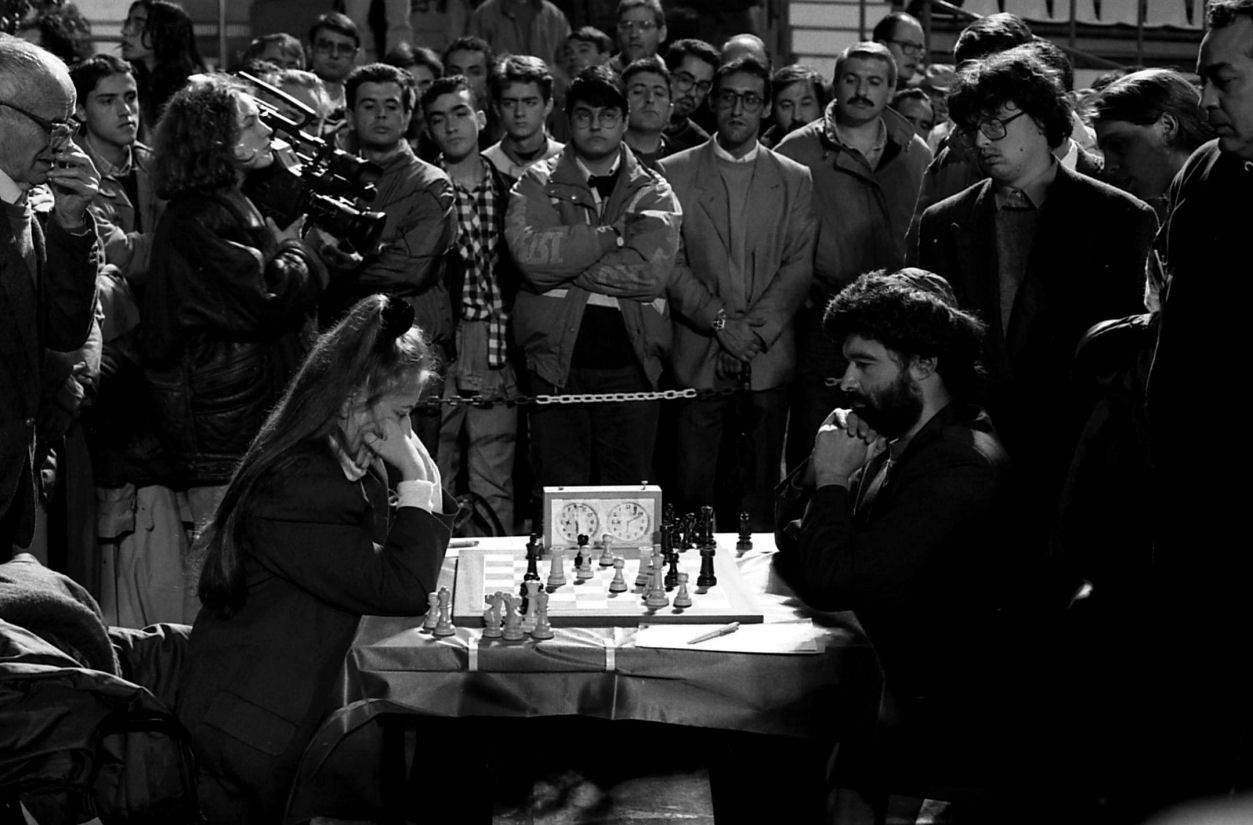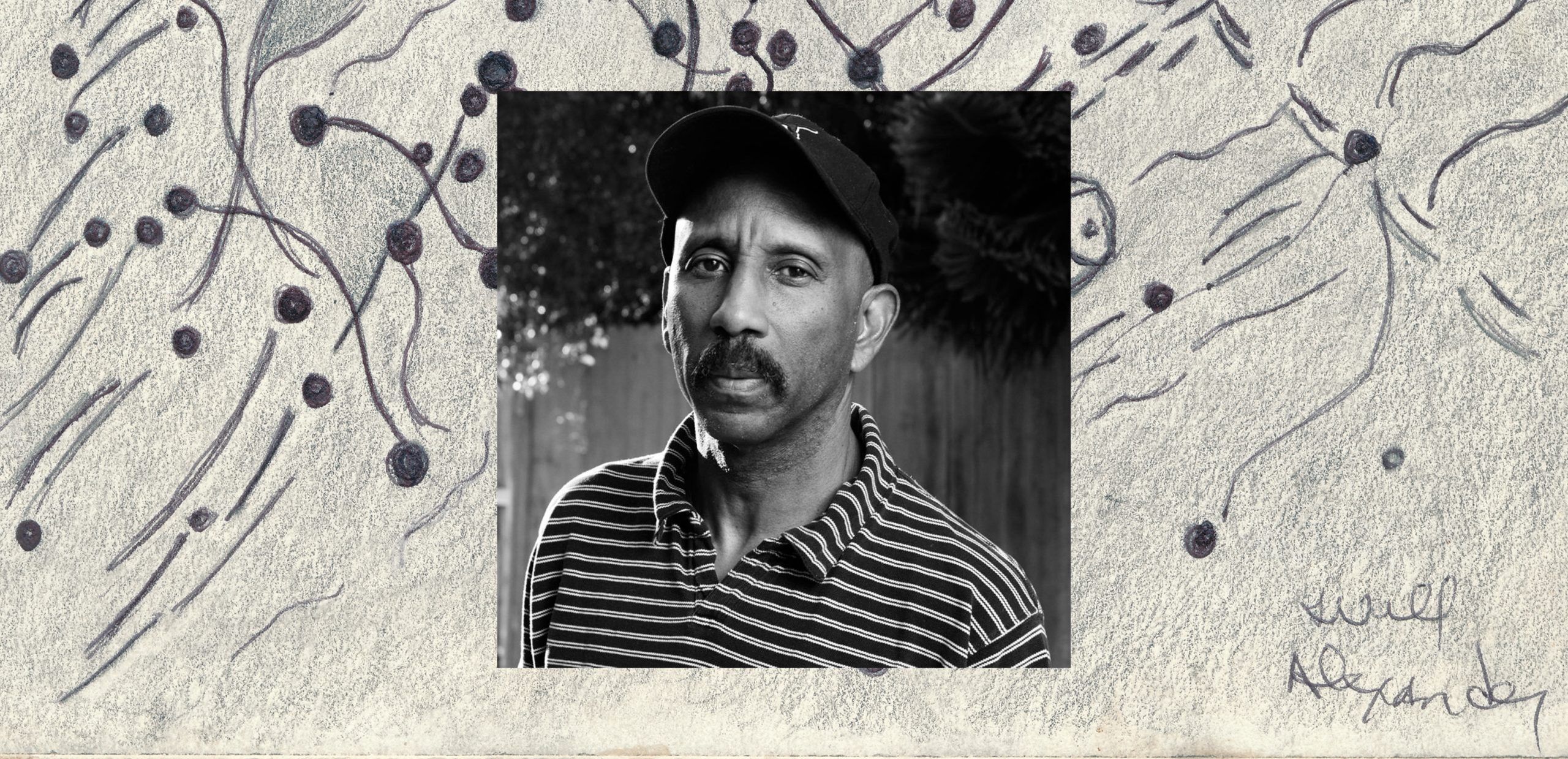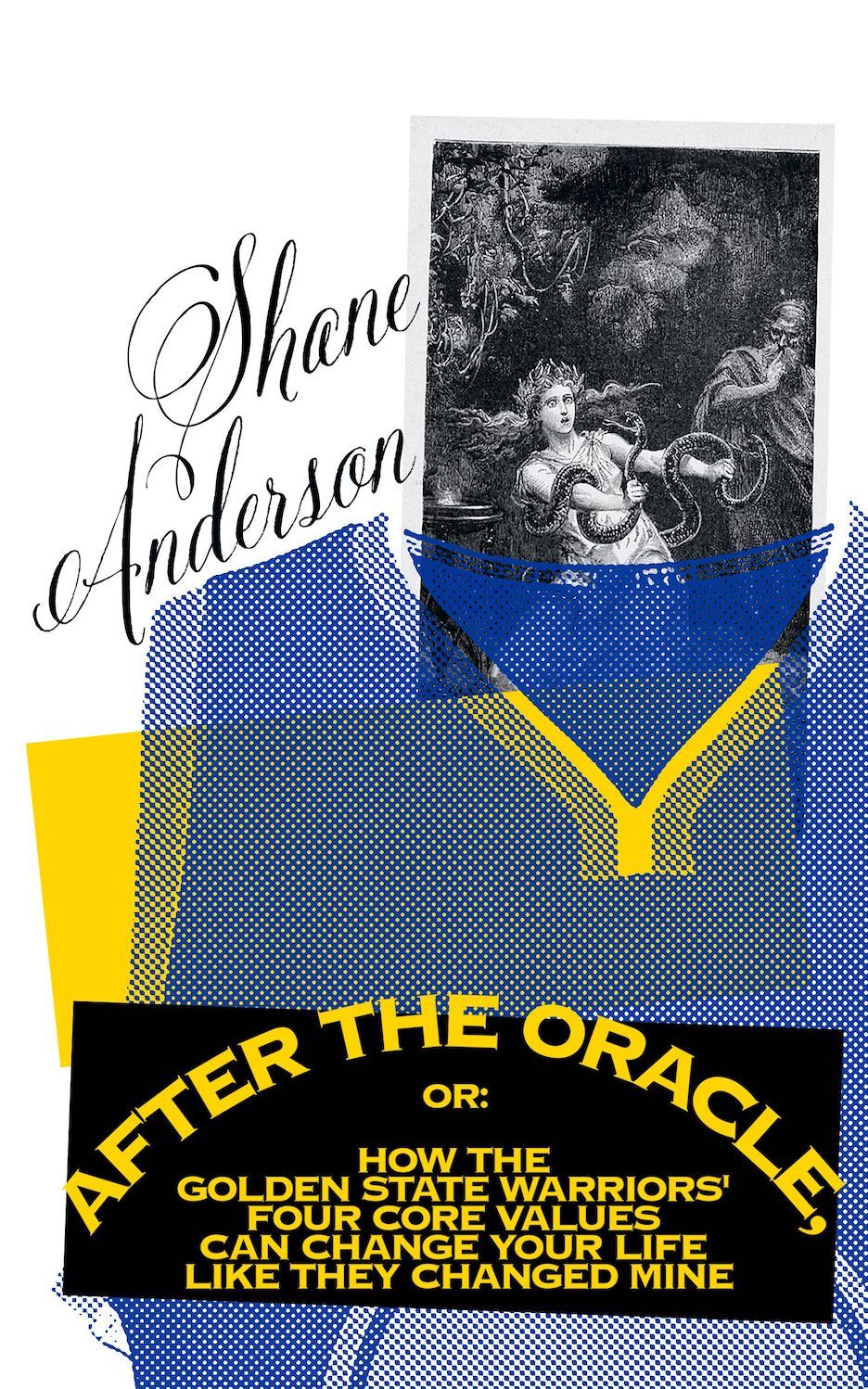The Aggressive Attacker: An Interview with Chess Grandmaster Judit Polgár
|Shane Anderson

Hard as it is to admit, the gooey hours of home office, home sports, homecooked meals, and home entertainment no longer feel very far away, and some of us are already dusting off our Pelotons and stocking up on nonperishables, toilet paper, and wine as we prepare for the next big nothing. Like many, one of my favorite coping mechanisms was chess, a thousand-year-old game of strategy which experienced a huge surge in popularity during lockdown, thanks in part to The Queen’s Gambit and Grandmasters livestreaming on YouTube and Twitch (chess was also the inspiration behind 032c’s AW 21-22 collection, “Maria”).
On one of the countless days I spent streaming Agadmator’s YouTube channel, Judit Polgár suddenly appeared to me like a revelation. She made moves that baffled my mind, challenging notions of solid play every time she sacrificed pieces for initiative. An Olympic Gold Medalist at 12, a grandmaster at 15 years and four months (the youngest ever at the time, beating the previous record held by Bobby Fischer), and the only woman so far to reach the top ten of active chess players, Polgár, who was born on 23 July 1976, is the greatest female chess player of all time and dominated the game with crowd-pleasing audacity, putting together combinations that are still shocking. When she defeated former World Champion Garry Kasparov in 2002, he refused to shake her hand. But by the end of her career, Kasparov, who once said women were too “weak” for chess, had to show respect for the person he previously called a “circus puppet,” admitting that if playing “like a girl meant anything in chess, it would mean relentless aggression.”
Now nominated to the Chess Hall of Fame, Polgár recently took time from her busy schedule of preparing for her commentating of the 2021 World Chess Championship to talk about life, chess, and how humans are becoming more like machines.

Shane Anderson: What’s your favorite opening?
Judit Polgár: The Sicilian Defence, of course.
Why?
When black plays the Sicilian, the game is sharp for both players. It’s for people who like action, calculation, and tension.
And as white?
When I was a little kid, my favorite opening was the King’s Gambit. I became a Grandmaster with that opening. It was only later that I switched. But I always remained an e4 player. That way it was up to my opponent to choose what happens next.
What happens if you choose the wrong opening? I’m thinking of your rapid game against Kasparov in 2002.
Kasparov’s choice was not objectively bad. It was more that it didn’t fit his style at all. He was more of a tactical player, an attacker, who always played the Sicilian with black. I always loved Kasparov’s play and followed his openings when I was a kid, but when we played against each other and he chose the Berlin Defense, it created a game that is more positional, since the Berlin Defense automatically takes the queens off the board. This limited his opportunities.
How would you describe your own style?
I was always considered an aggressive attacker. I was a tactician who was ready to sacrifice some of my pieces to get an attack. I’ve won many games with spectacular combinations. When I was a kid, I was famous for not exchanging my queen if possible, making sure to attack my opponent. Many of my games didn’t last very long because I preferred to keep the queen. It was a different story when I started playing at the top level of chess, but I always remained a player who sought initiative and who wanted to get a healthy attacking position.
I was also ready to play more positional structures but my image as a very aggressive attacker always got in the way. Whenever I had an attacking game, the press immediately talked about it, but not when I had a more positional game.
How important is image in chess?
Image is very important in professional chess. Take Magnus Carlsen. I remember one specific game in the title match of the 2016 World Chess Championship. Carlsen made an awful move against the challenger Sergey Karjakin. As the commentator of the event, I couldn’t say it was an awful move, so I just said, “it looks very suspicious.” I then continued with something like, “if the World Champion makes this move, then we have to think about it some more. Maybe he has some special idea behind it.” This is about image, about the image of how good the player is, about the kind of theoretical preparation a player puts into a World Championship title match, about their homework teams. We would say something different for a lesser player.
“Players are becoming more like computers because they work with the engines all the time and the engines are becoming more human.”

Has the “homework” changed since computer engines like Stockfish became more readily accessible?
Chess is basically a new game. This new sport still has the same rules but everything else has changed. When I was a kid, we had the chessboard sitting in front of us and I was mostly working with my sisters or a chess coach. After we played, we would analyze the games, make conclusions, and then take down notes with pen and paper. We had to really think about which key lines and key moments were worth writing down, since it entailed so much paper. Even doing it this way, I travelled to tournaments with a handbag that was around 15 kilos.
Preparation started to change when online chess databases were introduced in the mid-1990s. Things moved from paper to digital, and you could access endless information. That’s not necessarily a good thing, by the way. We had to learn that information can be burdensome even when it doesn’t add extra kilos. You have to be very careful about how much information you accumulate.
The next big change was when tournaments started being played live and broadcasted online and you could get information about games much faster. Previously, you didn’t get to see the games at a tournament, which meant you could recycle your information and play the same openings and lines in another tournament. But once the games started going online, it meant that if someone played a certain way the day before, you had to be aware of it the day after. So, you suddenly had to be much faster.
The real change came with artificial intelligence though. Now, on the top level, preparation is all about what kind of processors you have, how many clouds you have crunching data 24/7. You’re basically giving the machines direction and then they dig as deep as they can. In some ways, you’re just supervising them. At the same time, you have to be able to understand what the computer says, what the ideas are behind the moves. You have to be able to translate what they’re saying. What’s still tricky is the evaluation. Evaluation is important. Weaker players often see the engine’s evaluations, then go to a tournament to play the position the engine offered. They play this until the point their preparation ceases, and after that they have absolutely no idea how to place their pieces. They have no idea what the strategy is. They get lost. And very easily.
But Carlsen is very interesting in this regard. In 2019, you could feel that he started looking at Alpha Zero’s games quite a bit. He started implementing many of the computer’s strategic ideas, like sacrificing material for longer strategic compensation. And like Alpha Zero, Carlsen’s style isn’t very concrete. It’s not about concrete calculations and depth, it’s about understanding the complexity of different parts of the game. It’s about strategic vision.
Players are becoming more like computers because they work with the engines all the time and the engines are becoming more human, somehow. They’ve partnered up.
“Pattern recognition is essential for a chess player but it’s also a big part of our lives. It’s important to recognize our own patterns, our own routines, and to develop good routines. You can then develop your strategy to reach your desired outcome.”

So far you’ve described chess as a sport, but you’ve also used language from the sciences, and the arts. What’s the overlap between these three domains and chess?
Chess and art have many connections. Even at a very low level, chess has moments of surprise and suspense like in an action movie. There are also more delicate art forms in chess and even chess composers. The composers implement a number of ideas into a single position, creating compositions that are really refined, where everything is perfect down to the final detail. They’re like the Michelin chefs of chess.
As for science, there’s of course the connection to applied sciences like artificial intelligence, but you also have to be a scientist when you play chess. You need to conduct a lot of research on openings and on your opponents. You have to be a critical thinker and have a magnifying glass, looking at the smallest details to make improvements and perform at a better level.
Like other sports, chess is about winning and losing, recovering, being fit, being prepared. You need to be fully dedicated, totally focused, so you can have a solid and stable performance. Chess is obviously not a physical sport, but it does require endurance and can be physically taxing. Some players may lose three to four kilos during tournaments just by sitting and concentrating so hard. It consumes a lot of energy.
Does chess have any applications beyond the board?
Pattern recognition is essential for a chess player but it’s also a big part of our lives. It’s important to recognize our own patterns, our own routines, and to develop good routines. This is also important in education. If children can learn different patterns, it can provide them with a model. You can then develop your strategy to reach your desired outcome.
What’s the biggest lesson you can learn from chess?
Planning, decision making, and taking responsibility.
How does chess relate to responsibility?
Look at the pawns, for instance. They don’t move backwards. So, if you make a move forward with them, it weakens your position. It’s like breaking a leg. It might heal, but it won’t be perfect anymore. You don’t lose the game because you created a weakness, but you have to understand that it has consequences. You have to take the responsibility for that. You have to commit yourself to this move and live with this possible mistake for the rest of the game. You have to say, “that’s OK, so I blundered something.” You have to play on and live with this. And if I do things right, I can switch strategies and maybe outplay my opponent.
Have you been able to apply what you’ve learned on the board to your life?
I use it in everything I do, whether it be cooking, organizing festivals, or developing my educational program.
What’s the goal of this program?
The Judit Polgár Method is for students from preschool to elementary school. Chess can help children develop skills such as holistic, logical analysis and systematic thinking, which is pushed into the background with the rise of visual information-based thinking. You can use chess in many ways in education to have it be more fun and engaging.
Is the goal to also help bridge the gender gap (in chess)?
At this level, the gender gap isn’t as great. Boys and girls do the same things, like learning math or learning geography. The gender gap in chess comes later when child prodigies go to private coaches. If a talented seven-year-old boy receives feedback, the coach will say things like “Wow, you’re so fantastic, you can become the next Magnus Carlsen.” But if it’s a girl, the coach will say things like, “You can become the Women’s World Champion.” That’s like saying the boy can become a Nobel Prize winner and the girl can get a PhD.
Do you think there will be a female world champion in the foreseeable future?
I’m not really worried about that. I’m more interested in having a few ladies in the top ten. To only have one female world champion and not move forward in general would be a lot worse than having more women present in the sport. In these few centuries, we’ve only had 16 world champions. Which suggests that it’s not about gender, really. It’s about a series of things coming together.
Does a player’s personality away from the board correspond to the way they play?
Usually someone’s style of chess also represents the personality or character of the person. They are just who they are. I was always an attacking player in chess, which does not mean that I have an aggressive personality, but that I’m very straightforward, working towards my goal.
Credits
- Text: Shane Anderson



